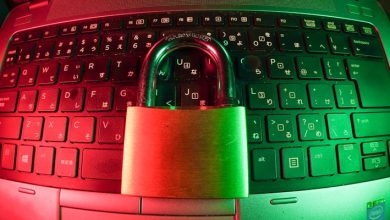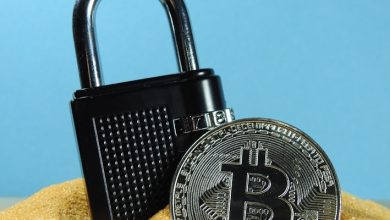Multi-Factor Authentication and Its Importance in Crypto

- Understanding Multi-Factor Authentication
- The Role of Multi-Factor Authentication in Crypto Security
- Why Multi-Factor Authentication is Crucial for Crypto Transactions
- Enhancing Security with Multi-Factor Authentication
- The Benefits of Implementing Multi-Factor Authentication in Crypto
- Best Practices for Multi-Factor Authentication in the Crypto Industry
Understanding Multi-Factor Authentication
Multi-factor authentication is a security method that requires two or more forms of verification before granting access to an account. This extra layer of security significantly reduces the risk of unauthorized access, especially in the crypto space where assets are highly valuable and susceptible to hacking attempts.
One common example of multi-factor authentication is the combination of a password, a fingerprint scan, and a one-time code sent to a mobile device. This ensures that even if a hacker manages to obtain a user’s password, they would still need the additional factors to gain access to the account.
By implementing multi-factor authentication, crypto users can have peace of mind knowing that their assets are well-protected. It adds an extra barrier that makes it much harder for malicious actors to compromise accounts and steal funds. In a decentralized and largely unregulated market like cryptocurrency, this added layer of security is crucial.
The Role of Multi-Factor Authentication in Crypto Security
Multi-factor authentication (MFA) plays a crucial role in enhancing security measures for cryptocurrency transactions and storage. By requiring users to provide two or more forms of verification before granting access, MFA significantly reduces the risk of unauthorized access and potential cyber attacks.
One of the primary benefits of using MFA in crypto security is its ability to add an extra layer of protection beyond just a password. This additional step makes it much more challenging for hackers to gain access to sensitive information, such as private keys or wallet addresses.
Moreover, MFA helps to mitigate the risk of phishing attacks, where malicious actors attempt to trick users into revealing their login credentials. By requiring multiple forms of verification, MFA can help prevent these types of attacks and keep crypto assets safe.
Overall, incorporating multi-factor authentication into cryptocurrency security protocols is essential for safeguarding digital assets in an increasingly complex and high-risk environment. It provides an additional level of defense against unauthorized access and helps to maintain the integrity of crypto transactions.
Why Multi-Factor Authentication is Crucial for Crypto Transactions
Implementing multi-factor authentication for crypto transactions is crucial in ensuring the security of your digital assets. With the increasing number of cyber threats targeting cryptocurrency exchanges and wallets, having an extra layer of protection is essential to safeguard your funds.
Multi-factor authentication adds an additional step to the login process, requiring users to provide two or more pieces of evidence to verify their identity. This could include something they know (like a password), something they have (like a mobile device), or something they are (like a fingerprint).
By requiring multiple factors to access your crypto accounts, multi-factor authentication significantly reduces the risk of unauthorized access. Even if a hacker manages to obtain your password, they would still need the second factor to gain entry, making it much harder for them to compromise your account.
Furthermore, multi-factor authentication can provide real-time alerts in case of any suspicious activity, allowing you to take immediate action to protect your funds. This added layer of security goes a long way in preventing unauthorized transactions and potential financial losses.
Enhancing Security with Multi-Factor Authentication
Enhancing security with multi-factor authentication is crucial in the world of cryptocurrency. By requiring users to provide two or more forms of verification before granting access to their accounts, multi-factor authentication adds an extra layer of protection against unauthorized access and potential cyber threats.
One of the most common forms of multi-factor authentication is the combination of something you know (like a password) with something you have (like a code sent to your phone). This dual-factor approach significantly reduces the risk of identity theft and unauthorized access to sensitive information.
Implementing multi-factor authentication is a simple yet effective way to enhance the security of your cryptocurrency accounts. By utilizing this additional layer of protection, you can significantly reduce the likelihood of falling victim to cyber attacks and ensure that your assets remain safe and secure.
The Benefits of Implementing Multi-Factor Authentication in Crypto
Implementing multi-factor authentication in cryptocurrency transactions offers several key benefits that can greatly enhance the security of your digital assets. By requiring multiple forms of verification before granting access to your crypto accounts, multi-factor authentication adds an extra layer of protection against unauthorized access and potential cyber threats.
One of the main advantages of using multi-factor authentication in the crypto world is that it significantly reduces the risk of unauthorized access to your funds. Even if a hacker manages to obtain your password, they would still need additional verification, such as a fingerprint scan or a one-time code sent to your mobile phone, to gain access to your account. This greatly decreases the likelihood of a successful cyber attack.
Moreover, multi-factor authentication can also help prevent phishing attacks, where cybercriminals attempt to trick you into revealing your login credentials. With multi-factor authentication in place, even if you inadvertently provide your password to a phishing scam, the hacker would still need the second form of verification to access your account.
Additionally, implementing multi-factor authentication can give you peace of mind knowing that your digital assets are well-protected. In the volatile world of cryptocurrency, where cyber threats are constantly evolving, having an extra layer of security can make all the difference in safeguarding your investments.
Best Practices for Multi-Factor Authentication in the Crypto Industry
Implementing multi-factor authentication (MFA) is crucial in the crypto industry to enhance security measures and protect sensitive information from unauthorized access. Below are some best practices for implementing MFA in the crypto space:
- Utilize a combination of factors such as passwords, biometrics, security tokens, and one-time passcodes to strengthen authentication processes.
- Regularly update and rotate authentication factors to minimize the risk of compromise.
- Enable MFA for all user accounts, including employees, customers, and partners, to create a layered defense against potential threats.
- Integrate MFA solutions with existing security protocols and systems to ensure seamless implementation and operation.
- Educate users on the importance of MFA and provide clear instructions on how to set up and use it effectively.
By following these best practices, crypto businesses can significantly reduce the likelihood of unauthorized access and protect their assets and data from potential security breaches.



